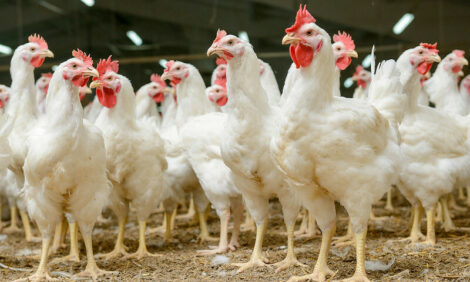



How Can China Meet Growing Demand for Meat?
CHINA - China’s meat consumption is expected to rise by 35 per cent by 2020 while rice and flour consumption will fall by five per cent each, writes Chris Harris.Consumption of cooking oil is also expected to rise by 35 per cent while sugar consumption will go up by 52 per cent and consumption of dairy products will rise by 116 per cent.
The reason for the sharp change in eating habits is the change in the Chinese population to a wealthier more urban people, according to Sylvia Ren.
Speaking at the Grain Outlook Conference in London, Ms Ren, the China Markets Manager at FCStone said that at present 55 per cent of the Chinese population lived in towns.
However, while disposable incomes are increasing, China still lags behind the US on what is spent on food. In China on average $530 is spent per capita each year on food, while in the US the figure is $2010.
While China’s gross domestic product is continuing to increase rapidly – at present at an estimated 7.5 per cent the gap between the US and China is closing, with China’s GDP falling and the US GDP rising.
Ms Ren said that the change in the population and eating habits, with a growing demand for meat is seeing China as the leading pig producer in the world – producing more pigs than the next 43 nations. The growth in the pig population to satisfy the growing demand for meat also means that a rise in meal consumption in feed of just 10 pounds per head will mean that China would require an additional 3.25 million tonnes of meal.
However, China has the highest corn and wheat prices in the world, which means the country relies heavily on imports.
Over the last five years, the Chines government has taken active measures to increase stocks of oilseeds to help stabilise the market. The reserves have meant that the purchase price has increased year on year and the amount of reserves has meant that the government has been able to regulate and control the market.
Similarly, China is also starting to grow reserve stocks of corn, rice and wheat.
The oilseed reserves are held at both local and national levels, bought by the government at a minimum prices from the farmers and released onto the market at auction.
For the Chinese farmer, corn has the highest planting margin and last year the country increased corn planting by two per cent, with some of the top areas increasing acreage by seven per cent.
By contrast soybean planting was down by 20 per cent.
“But in 2013, soybean and rice margins recovered as farmers, especially in Heilongjiang switched one per cent of acreage from corn to soybean, rice and sorghum,” said Ms Ren.
“Rising margins are attracting more and more farmers to plant rice instead of soybeans in Northeast China or rapeseed in the Yangtze River provinces.
“We experienced extremely tight rapeseed meal supply this year, but had good yields at the beginning of harvest.”
However, the growth in production of oilseeds has slowed down with production acreage for soybeans and rapeseed falling yearly because of lower incomes and yield.
Part of the problem has been a shrinking arable land area in China which has now been stabilised, but the gap between soybean and other cash crops in terms of yield has been widening.
Yields in China for both soybean and rapeseed are lower than many of the major exporters and according to Ms Ren, the situation is not likely to improve.
However, while yields are falling, demand for oilseeds has grown by three per cent over the last six years and by between five and six per cent between 2009 and 2011.
Domestic demand for protein feed climb higher with an annual growth of 8.5 to 8.9 per cent over the last five years and the demand for meat, poultry, eggs and aquatic products has grown by three per cent over the same time. This will mean that demand for oil and oilseeds will also continue to rise.
The outlook is for a growth in the demand for protein to be between four and five per cent over the next five years although demand for meat and eggs will only rise by one or two per cent.
With the growth in the demand for protein, soybean imports are expected to rise by three or four million tonnes over the next five years and there is also expected to be a growth in the consumption of vegetable oils over the next five years, although not at the high rate that has been experienced over the last five years.
This year China imported 61.5 million tonnes of soybean compared to 58.4 million tonnes in 2012. China’s canola imports are expected to rise by more than 500,000 tonnes this year.
Ms Ren said that the main challenges facing the Chinese grain and oilseed market is to ensure supply and also to ensure food safety.
She said there is a need for greater transparency in the market and the country needs to connect with the global market to be able to import more raw materials – soybean, wheat and corn meal as well as being able to import more meat especially beef and lamb.








